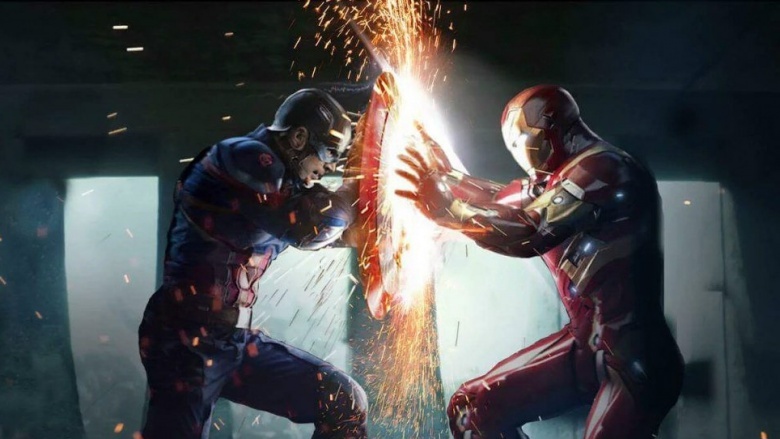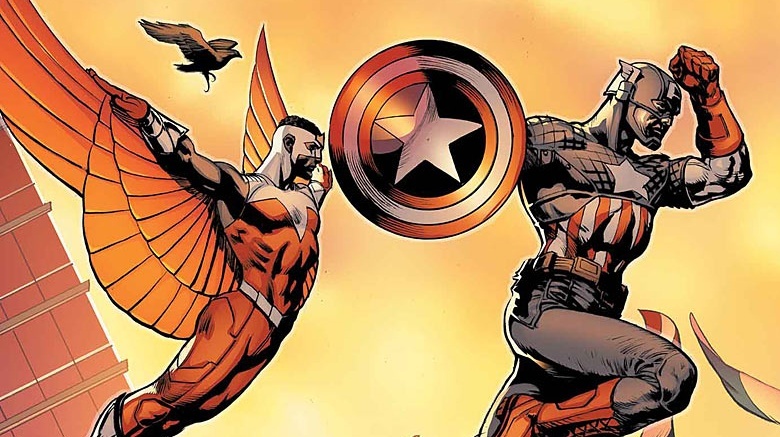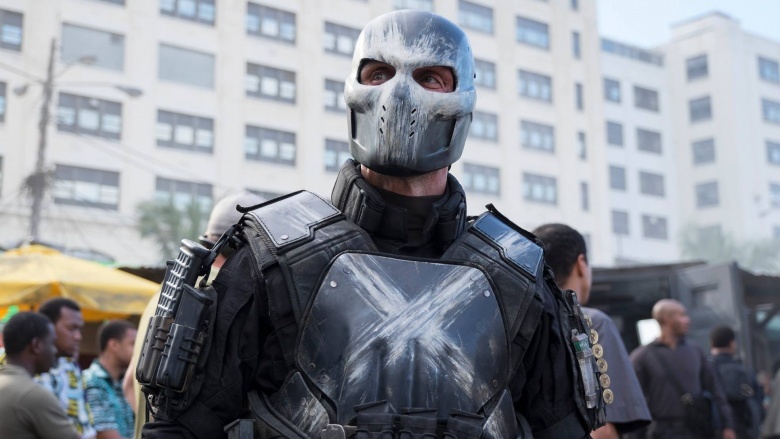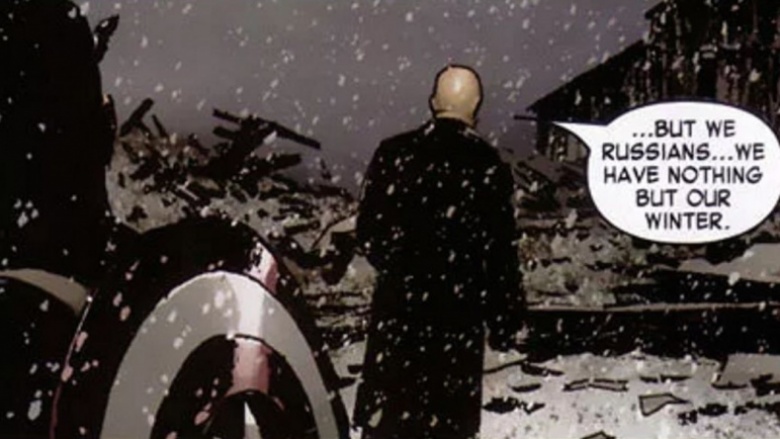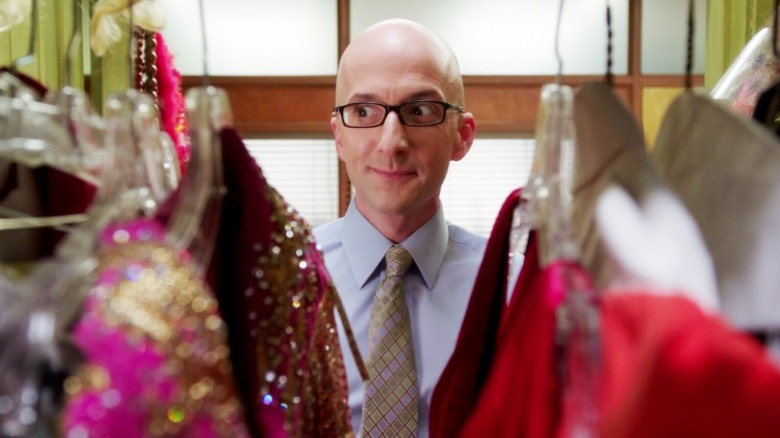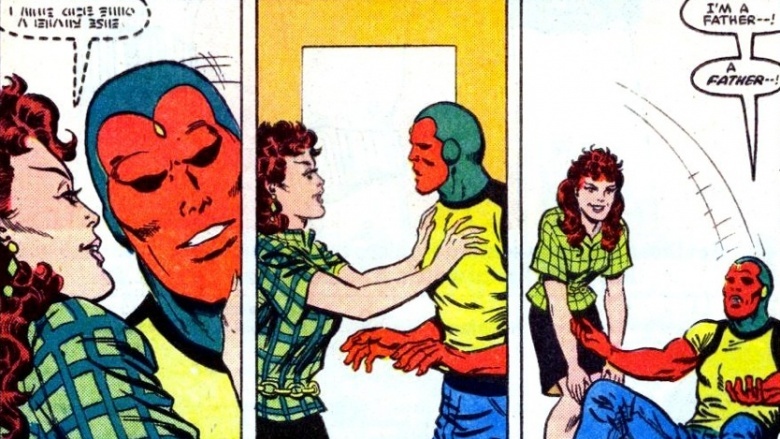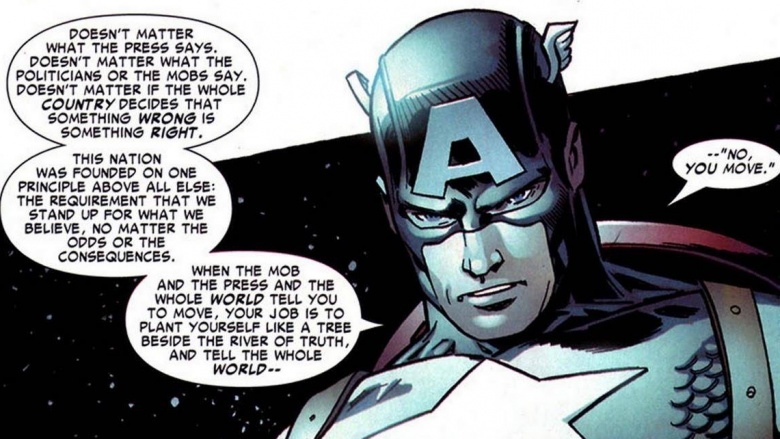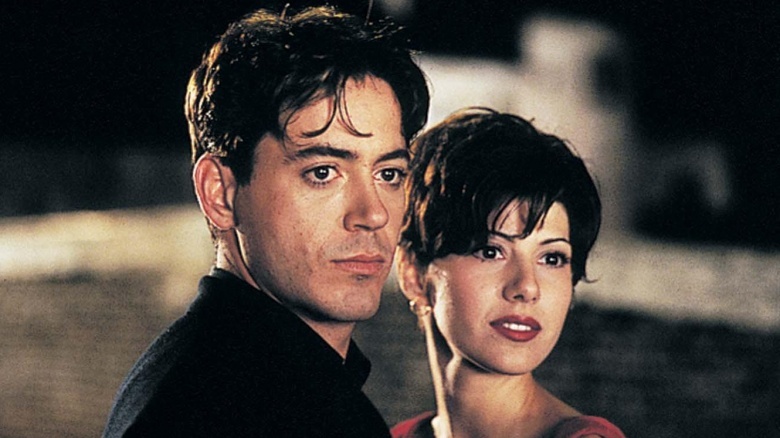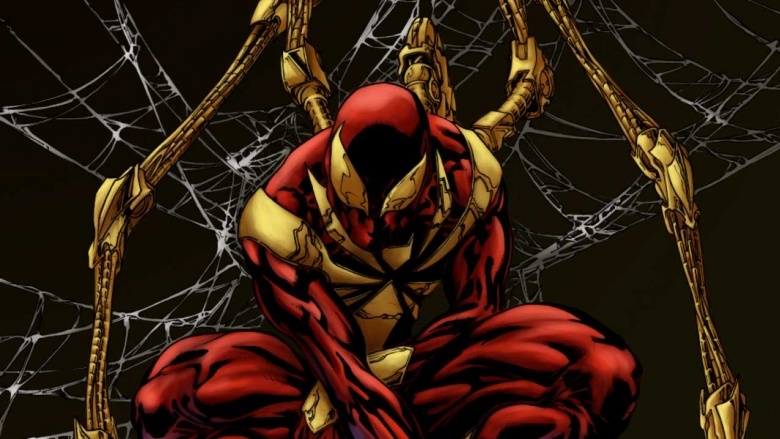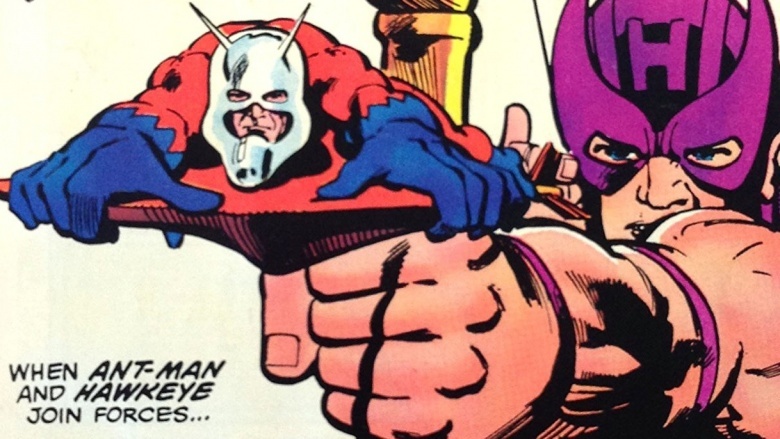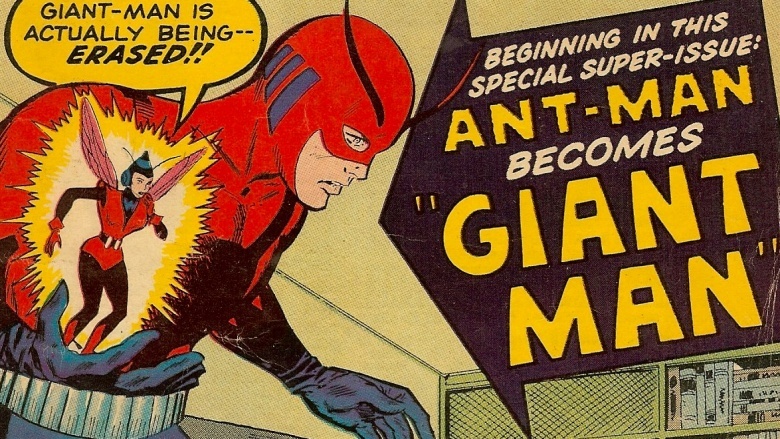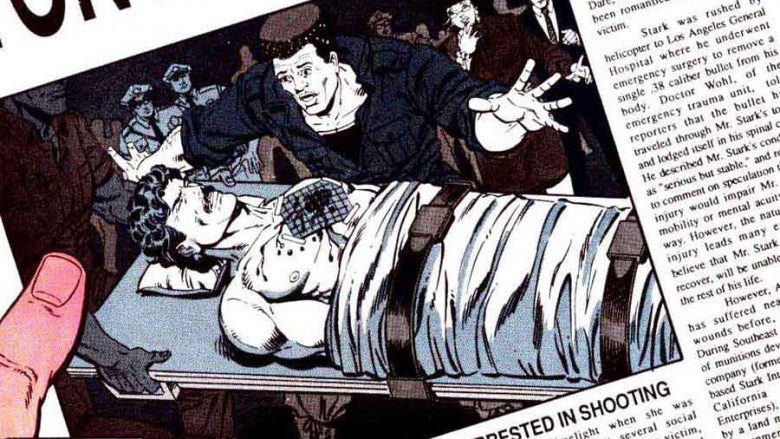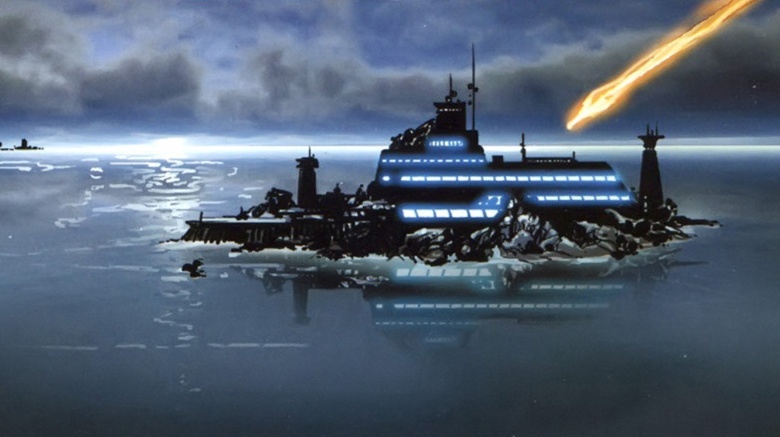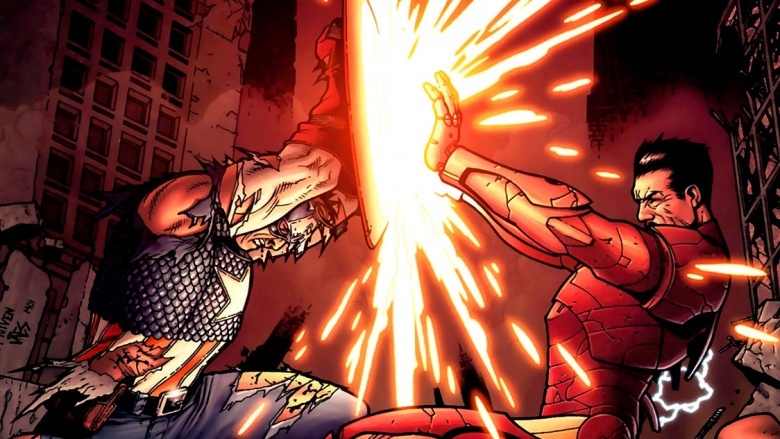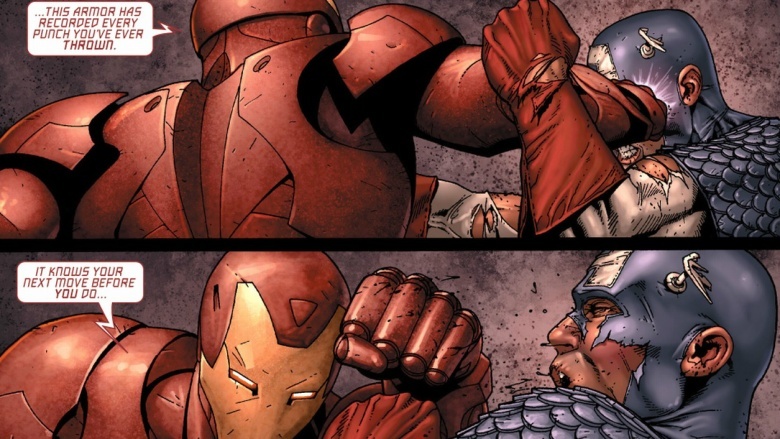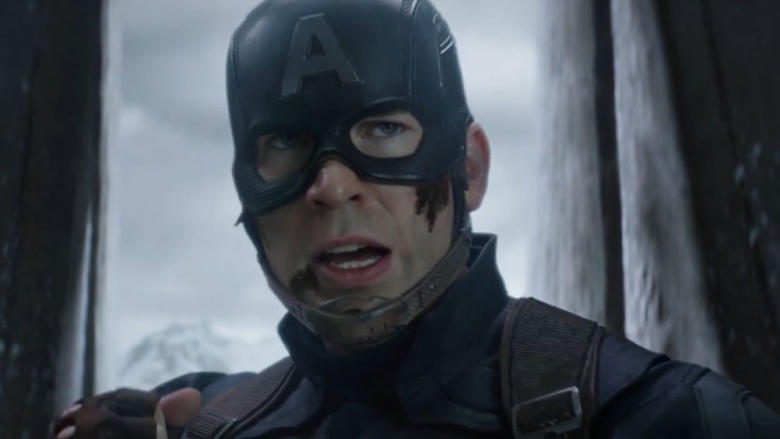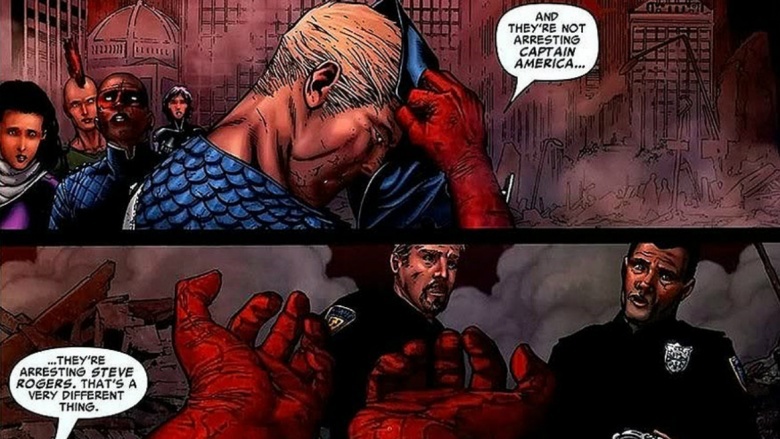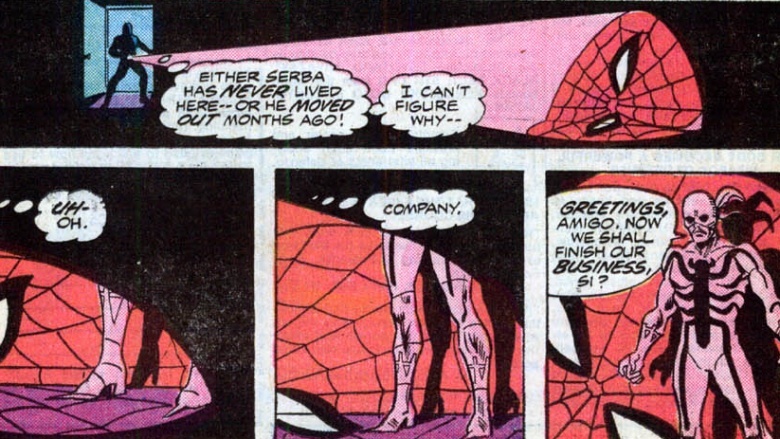Captain America: Civil War Easter Eggs You Missed
Captain America: Civil War lived up to all the hype, offering yet another spectacular entry into the Marvel Cinematic Universe. While the film felt more like the third Avengers film than the third Captain America flick, we're still shocked at all the crazy plot twists and superpowered fights. Amidst the carnage, there are plenty of references and Easter eggs you may not have noticed while you were gawking at your favorite superheroes going all WWE on each other. As you'd expect, there's a Wakanda-sized amount of spoilers ahead, so you might want to put this list on ice if you haven't seen the movie yet.
Drones are for the birds
In the comics, Sam Wilson usually has a pet falcon, named Redwing, that he brings with him to the battlefield. Due to an incident with the Cosmic Cube/Tesseract, he gains a telepathic link with the bird that syncs their brains together, allowing Wilson to see whatever the falcon does. To make things simpler, Captain America: Civil War made Redwing as a remote controlled drone that would fly out of his backpack. Wilson could use his goggles to see from the perspective of the machine to get a tactical readout on his surroundings. Gotta admit...it was a lot cooler than a companion from the aviary.
Rearranging Crossbones
Holding a grudge against Steve Rogers for the events of Captain America: The Winter Soldier, Crossbones attempts to steal a biological weapon in Lagos, Nigeria. Eventually, the villain gets in close and blows himself up alongside Cap in a heavily populated marketplace. Scarlet Witch's containment of the blast and sending it away negated a lot of the casualties that would've happened otherwise, but some innocents were caught in the blast nonetheless, triggering the government stepping in with the Sokovia Accords. While he may have inadvertently helped start the Civil War in the movie, he does the opposite in the comics. After Steve Rogers turns himself in to the authorities, mean ol' Crossbones snipes him from afar, leading to Cap's (temporary) death.
Dealing with Karpov by the book
Remember that guy who had the red book with the passwords that activated the Winter Soldier's programming? That character is Vasily Karpov, who played a slightly more important role in the comics. Karpov helped Cap foil one of Red Skull's plans, but he also played a pivotal role in turning an injured Bucky Barnes into the Winter Soldier.
Community contributions
Directors Anthony and Joseph Russo are known for directing episodes of Arrested Development and Community prior to their ventures in the Marvel Cinematic Universe. In Civil War, Jim Rash, known for playing Dean Craig Pelton on Community, played the MIT liaison who was speaking to Tony Stark after his on-stage announcement. If you check out the Russos' previous Marvel movie, The Winter Soldier, you may have recognized Abed Nadir himself, Danny Pudi, as an agent of S.H.I.E.L.D.
Excellent Vision
In the comics, that wacky robot the Vision started wearing clothes so he wouldn't freak out his other teammates as much, and try to blend in more. We saw Paul Bettany decked out in sweaters throughout Civil War, while still wearing the Mind Stone in his forehead, which makes for one awesome fashion accessory. Furthermore, we saw the book-based relationship between Vision and Wanda start to flourish, as the two characters seemingly care for one another, despite how weird and chaotic their lives have been so far.
From Captain to Carter, from Carter to Captain
We're sure a lot of you got a little teary eyed seeing Steve Rogers mourn as he carried Agent Peggy Carter's coffin at her funeral. Captain America's former neighbor/potential love interest Sharon Carter gives a heartfelt eulogy for her aunt that might sound familiar. In the comics, Captain America explains his decisions with his iconic "No, you move" speech. In the Marvel Cinematic Universe, Cap hears it from Sharon at a time when he needed to hear it most, cementing his resolve and stance on the Sokovia Accords.
May I buy you a drink?
Sure, it was a little awkward watching Tony Stark hanging out and kind of flirting with Aunt May before meeting Peter Parker. At 51 years old, Marisa Tomei looks light years better than the elderly Rosemary Harris, who was in her seventies while playing Aunt May throughout Sam Raimi's Spider-Man trilogy. Likewise, Sally Field was 66 while interacting with a then-28-year-old Andrew Garfield in The Amazing Spider-Man. Surprisingly, Robert Downey, Jr. is the same age as Tomei, so they actually looked just fine flirting with each other. But this isn't the first time Aunt May got cozy with Tony Stark. The 1994 romantic comedy Only You featured Downey and Tomei falling in love and all that good stuff by the end of the film. Is it possible that Iron Man might become Spider-Man's uncle in a few movies?
Tony Stark's Spidey suit
Spider-Man originally played an even larger role in the comic book version of Civil War. Siding with Tony Stark and supporting the Superhuman Registration Act, Spider-Man reveals to the world that he is actually Peter Parker, resulting in all kinds of problems in the long run for the wall-crawler. Fortunately, Tony Stark backs him throughout most of the events, even making a new, armored, "Iron Spider" suit that featured extra arms and all kinds of cool gadgets. During the movie, Stark finds Parker's original, makeshift superhero outfit a little underwhelming, since he's only been your friendly neighborhood Spider-Man for a few months by this time. He ultimately gives him his first real costume, complete with some new toys.
Ant and Hawk working together
During the film's fight between the two opposing halves of The Avengers, a miniaturized Ant-Man gets boosted towards Iron Man by holding onto one of Hawkeye's arrows. This scene is actually inspired by The Avengers #223, which depicts the awesome scene on its cover. This action shot leads to an awesome sequence of Ant-Man breaking down Iron Man's circuitry from the inside. But the fight only gets better when Scott Lang takes a huge gamble and becomes...
Giant-Man
In order to pull off a major distraction so Captain America and Bucky could get away from the big fight and stop Zemo, Scott Lang decides to experiment with a trick he's only tried once. Instead of shrinking to roughly a half-inch in height, Ant-Man turns ginormous. What non-comics fans may not realize is that Ant-Man has a long history of skipping the small stuff and going big. He first shrunk down to fun-size proportions as Ant-Man in 1962's Tales to Astonish #35. By Tales to Astonish #49 in 1963, he made his debut as Giant-Man, and fought a lame villain named the Living Eraser. Let's hope Marvel Studios never decides to bring that dude into the movies...
Trading places with War Machine
Seeing War Machine get accidentally shot down by Vision and lose the use of his legs was pretty sad. These events sort of mirror what happened between Tony Stark and James Rhodes in the comics. After being shot and paralyzed, Tony Stark uses technology to help himself walk and move around. Tony's overall health started to worsen, resulting in him creating the Variable Threat Assessment Armor. After everyone thought he died, Tony Stark's will named Rhodes the head of his company and gave him the new suit. This suit would become the War Machine armor. Now, War Machine has become the one struggling to walk after being shot, which shows a sad but unique twist on things.
The Raft
Meant to hold supervillains who are too dangerous for normal jail cells, the Raft's island-like designs were inspired by Alcatraz. In the movie, the government takes things a step higher by making The Raft entirely submersible, likely able to flood its cell blocks in case of an escape. In the Civil War comics, the heroes opposing Iron Man and the Superhuman Registration Act were imprisoned in Project 42, a part of the Negative Zone accessed by Fantastic Four leader Reed Richards. Unfortunately, Fox hasn't sold the movies rights to the Fantastic Four yet (they might as well by this point), but that franchise also includes the Negative Zone, hence the use of The Raft.
The climactic fight
The movie's title fight breaks down to a slugfest featuring Captain America and Bucky vs. Iron Man. After Bucky gets disarmed (sorry), Captain America and Iron Man go all-out in a one-on-one brawl. The fight features a highlighted segment where Tony Stark fires his repulsor blasts into Captain America's shield, recreating the iconic scene featured in the comic on the big screen.
Analyzing Captain America's fighting data
Near the end of the film's last fight, Captain America starts gaining the upper hand on Tony Stark. Backed into a corner by Cap's melee attacks, Tony Stark orders his armor AI to start recording, analyzing, and predicting Captain America's fighting style and moves on the spot, resulting in Iron Man being able to fight back and wreck Rogers at close range. This is yet another callback to what happened in Civil War comics, with Iron Man's armor being able to predict every single one of Cap's moves before he makes them.
Back to basics
After scanning and predicting Captain America's fighting techniques in record time, Iron Man proceeds to beat him bloody with relative ease. After getting trampled, Steve Rogers struggles to get up, and we have a familiar exchange. Tony Stark basically advises Captain to stay down, giving him one last warning before things get potentially fatal based on how badly he was just beaten. Captain America replies, "I can do this all day." If that sounds familiar, there's a good reason: Steve said the same thing in a pre-Super Soldier Serum scene in Captain America: The First Avenger, where he gets beaten up in an alleyway, but refuses to give up.
Cap steps down, Steve Rogers steps up
After beating Iron Man and refusing to deliver a killing blow, Steve Rogers picks up Bucky and tries to walk away from a defeated Tony Stark. Iron Man reminds Captain America that his father was the person who built his iconic shield, and that their whole second fight was due to a brainwashed Bucky killing Tony's parents. Rogers, fed up, ditches his shield while walking away from Tony. After going to the Raft to rescue Falcon, Scarlet Witch, Ant-Man, and Hawkeye, Rogers shows up in his street clothes. This means that Rogers infiltrated the Raft and took out the guards without his Captain America costume or gear.
This is yet another reference to the comics, at the end of which Cap tosses his shield and removes his mask, turning himself in as Steve Rogers the person, and not Captain America the hero. So, Steve Rogers rescued his former comrades, not Captain America, which insinuates a distinction and major difference between the two, not to mention the movie's significant reverence for the source material.
The Spider Signal
The second post-credits scene ends up with Peter Parker nursing his wounds back home in Queens while toying around with the new web shooters Tony Stark gave him. Parker accidentally shines a bright red light from the device, which turns out to be the Spider Signal. Old school comic fans and should definitely be happy to see this calling card of the amazing wall-crawler. Basically, Spider-Man would shine this giant projection of his face onto unsuspecting villains, announcing his entrance before he swings in to save the day. The next time we see the Spider Signal, expect to see Peter Parker do whatever a spider can.
